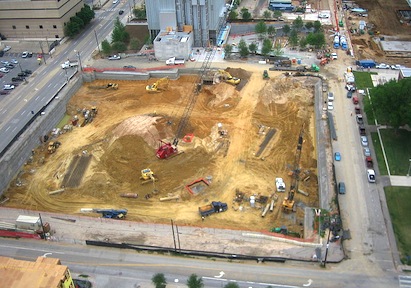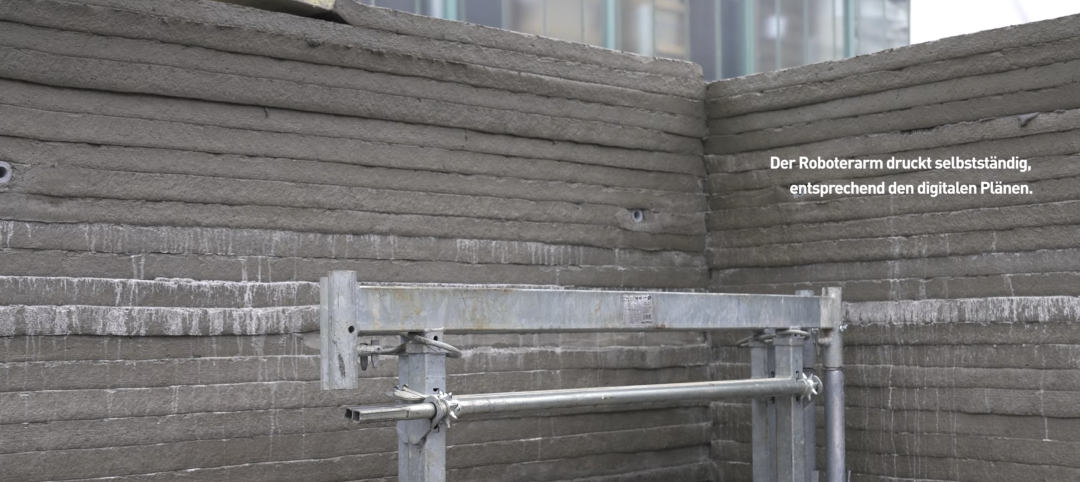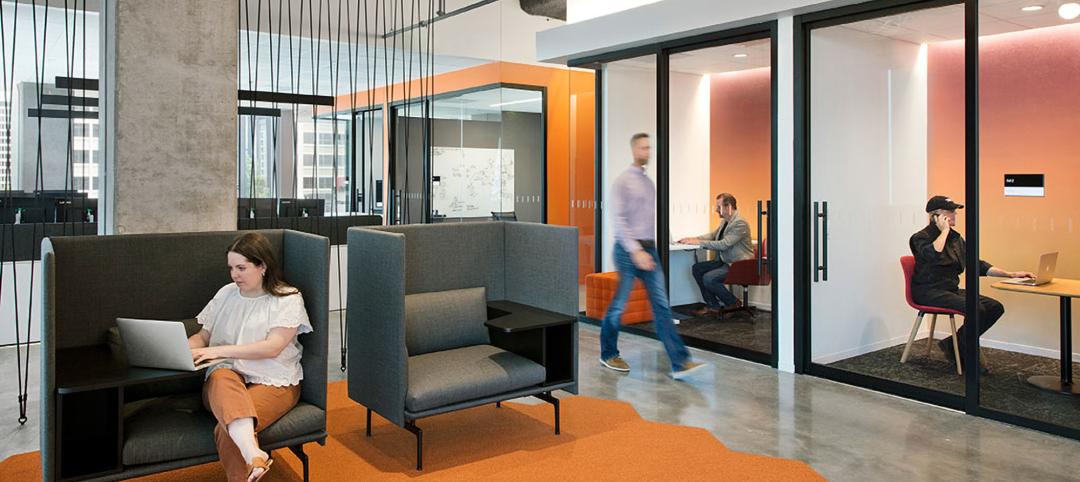The commercial real estate development industry grew at the strongest pace since the economic recovery began in 2011, according to an annual report on the state of the industry released today by the NAIOP Research Foundation.
The report, entitled “The Economic Impacts of Commercial Real Estate,” determined that the economic impact realized by the development process rose a significant 24.06% over the previous year, the largest gain since the market began to recover in 2011.
Direct expenditures for 2013 totaled $124 billion, up from $100 billion the year before, and resulted in the following economic contributions to the U.S. economy:
- Total contribution to U.S. GDP reached $376.35 billion, up from $303.36 billion in 2012;
- Personal earnings (or wages and salaries paid) totaled $120.02 billion, up from $96.75 billion in 2012; and
- Jobs supported (a measure of both new and existing jobs) reached 2.81 million in 2013, up from 2.27 million the year before.
The report says that the outlook for the remainder of 2014 and into 2015 is that the figures will continue to rise, with year-over-year growth expected in the range of 8-15%.
Commercial real estate development has an immense ripple effect in the economy, providing wages and jobs that quickly roll over into increased consumer spending.
“Commercial development’s economic impact is tremendous; simply put, a healthy development industry is critical to a prosperous U.S. economy,” said Thomas J. Bisacquino, NAIOP president and CEO. “As the uneven pace of the nation's economic recovery continues, the industry seeks public policy certainty that bolsters investors’ and developers’ confidence. Despite this lack of assurance, we see positive indicators of a rebounding industry, but believe the industry could be more robust.”
Industrial, Warehousing, Office and Retail Show Strong Gains:
- Industrial development posted a year-over-year gain of 48.5 percent due mainly to groundbreaking of energy-processing facilities.
- Warehouse construction registered a third strong year of increased expenditures in 2013, gaining 38.1 percent in 2013. This is on top of 2012 growth of 28.4 percent and 2011 growth of 17.8 percent, showing a sustained increase in demand for warehousing space.
- Office construction expenditures rose for a second year in 2013, up 23.3 percent from 2012.
- Retail construction expenditures rose modestly for a third year in 2013, up 4.8 percent from 2012.
Operations and Maintenance Surge Even As Building Owners Cut Costs With Energy Efficiencies and New Technologies
Through increased energy efficiency and advanced technology, building owners cut the average per-square-foot cost of operating building space in the U.S. by 14 cents, from $3.20/square foot to $3.06/square foot. Still, maintaining and operating the existing 43.9 billion square feet of commercial real estate space resulted in $134.3 billion of direct expenditures, and resulted in the following economic contributions to the U.S economy:
- Total contribution to GDP in 2013 $370.9 billion;
- Personal earnings (wages and salaries) totaled $116.8 billion; and
- Jobs supported, 2.9 million.
Top 10 States by Construction Value for Office, Industrial, Warehouse and Retail:
1. Texas
2. Louisiana
3. New York
4. California
5. Iowa
6. Florida
7. Maryland
8. Georgia
9. West Virginia
10. Oregon
Four new states joined the list: Louisiana, Maryland, West Virginia, and Georgia. These states made the top ten list due predominantly to development of highly specialized and expensive energy-related processing facilities. Illinois, Ohio, Massachusetts, and North Carolina dropped off the top 10 list, slipping to Nos. 11, 14, 15 and 18 respectively.
The report includes detailed data on commercial real estate development activity in all 50 states, and also ranks the top 10 states specifically according to office, industrial, warehouse and retail categories.
The report is authored by Dr. Stephen S. Fuller, director of the Center for Regional Analysis at George Mason University, and funded by the NAIOP Research Foundation.
An executive summary and the full report is online: www.naiop.org/
Related Stories
Laboratories | May 24, 2024
The Department of Energy breaks ground on the Princeton Plasma Innovation Center
In Princeton, N.J., the U.S. Department of Energy’s Princeton Plasma Physics Laboratory (PPPL) has broken ground on the Princeton Plasma Innovation Center (PPIC), a state-of-the-art office and laboratory building. Designed and constructed by SmithGroup, the $109.7 million facility will provide space for research supporting PPPL’s expanded mission into microelectronics, quantum sensors and devices, and sustainability sciences.
MFPRO+ News | May 24, 2024
Austin, Texas, outlaws windowless bedrooms
Austin, Texas will no longer allow developers to build windowless bedrooms. For at least two decades, the city had permitted developers to build thousands of windowless bedrooms.
Resiliency | May 24, 2024
As temperatures underground rise, so do risks to commercial buildings
Heat created by underground structures is increasing the risk of damage to buildings, recent studies have found. Basements, train tunnels, sewers, and other underground systems are making the ground around them warmer, which causes soil, sand, clay and silt to shift, settle, contract, and expand.
Sports and Recreational Facilities | May 23, 2024
The Cincinnati Open will undergo a campus-wide renovation ahead of the expanded 2025 tournament
One of the longest-running tennis tournaments in the country, the Cincinnati Open will add a 2,000-seat stadium, new courts and player center, and more greenspace to create a park-like atmosphere.
Mass Timber | May 22, 2024
3 mass timber architecture innovations
As mass timber construction evolves from the first decade of projects, we're finding an increasing variety of mass timber solutions. Here are three primary examples.
MFPRO+ News | May 21, 2024
Massachusetts governor launches advocacy group to push for more housing
Massachusetts’ Gov. Maura Healey and Lt. Gov. Kim Driscoll have taken the unusual step of setting up a nonprofit to advocate for pro-housing efforts at the local level. One Commonwealth Inc., will work to provide political and financial support for local housing initiatives, a key pillar of the governor’s agenda.
Building Tech | May 21, 2024
In a world first, load-bearing concrete walls built with a 3D printer
A Germany-based construction engineering company says it has constructed the world’s first load-bearing concrete walls built with a 3D printer. Züblin built a new warehouse from a single 3D print for Strabag Baumaschinentechnik International in Stuttgart, Germany using a Putzmeister 3D printer.
MFPRO+ News | May 21, 2024
Baker Barrios Architects announces new leadership roles for multifamily, healthcare design
Baker Barrios Architects announced two new additions to its leadership: Chris Powers, RA, AIA, NCARB, EDAC, as Associate Principal and Director (Healthcare); and Mark Kluemper, AIA, NCARB, as Associate Principal and Technical Director (Multifamily).
MFPRO+ News | May 20, 2024
Florida condo market roiled by structural safety standards law
A Florida law enacted after the Surfside condo tower collapse is causing turmoil in the condominium market. The law, which requires buildings to meet certain structural safety standards, is forcing condo associations to assess hefty fees to make repairs on older properties. In some cases, the cost per unit runs into six figures.
Office Buildings | May 20, 2024
10 spaces that are no longer optional to create a great workplace
Amenities are no longer optional. The new role of the office is not only a place to get work done, but to provide a mix of work experiences for employees.

















